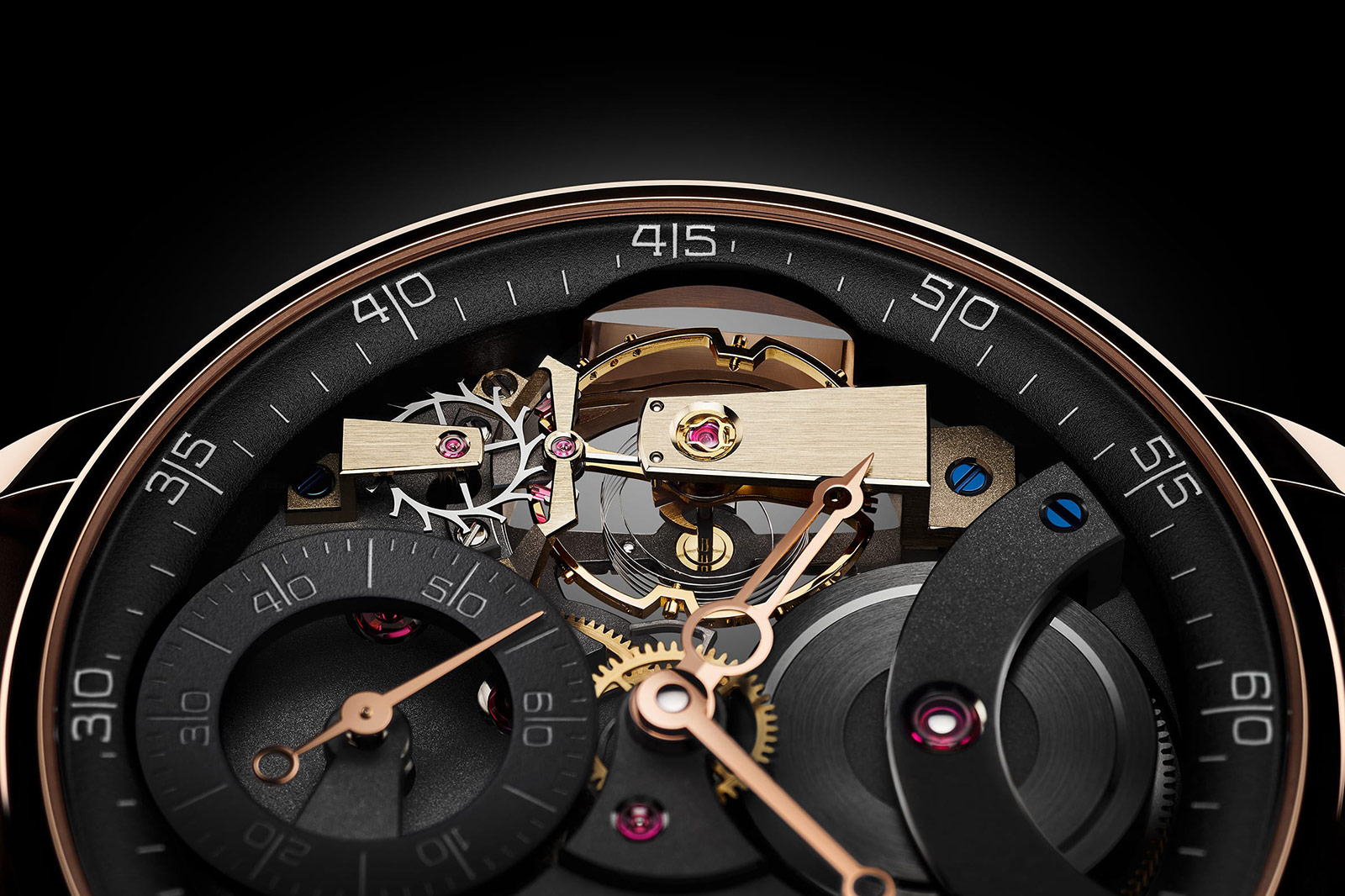
Balance springs are a tricky thing. The beating heart of a watch, they’re one of the most important and yet delicate parts of any movement. Measuring about 0.02mm thick, the thin strand of steel or silicon (or in some rare cases, gold or glass) is designed to oscillate back and forth, working with the escapement as a whole to turn raw, spring-wound energy into some demarcation of time. As such it’s one of the most important areas of development in horology and one of the most impressive is the cylindrical hairspring of the Ferdinand Berthoud Chronomètre FB 3SPC.
No matter the material, tolerances are incredibly small and the job of creating them is one of the most extreme tests of patience and sanity in watchmaking. So much so in fact, that very, very few brands actually make their own, even at the highest end. It’s just not worth the hassle.
Ferdinand Berthoud Chronomètre FB 3SPC
That’s in large part why most advancements in the field tend to do more with frequency than anything else. The more often the spring oscillates – the higher the hertz – the more accurate the timekeeping. In theory, anyway. Changing the fundamental shape is incredibly rare – and yet that’s what’s behind the Ferdinand Berthoud Chronomètre FB 3SPC.
A bit of background in case you’ve not come across the brand. Ferdinand Berthoud is named after an 18th century watchmaker, but was revived by Chopard back in 2015, just in time to capitalise on the meteoric rise of independent watchmakers like F.P. Journe and Philippe Dufour. Indeed, as a brand they rub shoulders with that kind of rarefied company thanks to their emphasis on true (read entirely) handmade watches. That includes, of course, the balance spring.
Louis Berthoud No. 26 decimal pocket watch from 1793
That in-house expertise led to Ferdinand Berthoud attempting the impossible and completely changing the balance spring. Well, that’s not entirely true; it’s not even new in a modern watch, with another recent version coming from Moser & Cie. Indeed, the concept of a cylindrical balance spring dates all the way back to a pocket watch by Louis Berthoud, the son of Ferdinand, in the 1700s. That said, you can’t just pick up a large, oversized balance from a pocket watch and slap it on your wrist. It took the Fleurier-based team some serious development.
Because it was built for a vertical position in a pocket watch, being horizontal causes some accuracy issues for a cylindrical balance spring. It’s something that can be solved by using a tourbillon, one of the few times that little doohickie is genuinely useful. But as you can see, there’s no tourbillon here. That would have been far too simple. Instead, Ferdinand Berthoud hand-bent the spring top and bottom in just the right way so that, sans tourbillon, the Chronomètre FB 3SPC meets COSC standards.
To just be a touch more emphatic, Ferdinand Berthoud’s in-house hairspring development team spend two years hand-bending tiny, tiny pieces of metal in just such a way that an 18th century novelty actually works in a wristwatch. That’s a level of needless dedication that gets a certain breed of collector a little too excited.
A sketch of the Chronomètre FB 3SPC’s cylindrical balance-spring, pallet-lever and escape-wheel
It goes above and beyond other recent examples of cylindrical balance springs; H. Moser & Cie’s Pioneer Cylindrical Tourbillon isn’t chronometer certified and, as the name suggests, opts for a tourbillon to keep its performance in line with the brand. By being able to strip away the cage, Ferdinand Berthoud offer not just chronometer performance, but a better view at the downright hypnotic, oddly-beating heart of the watch.
Even if the technicalities of a balance spring don’t awe you however, the rest of the watch matches it nicely. The handmaking in the Chronomètre FB 3SPC is obsessive, with 100 hours of finishing on the movement alone and a look derived from historical marine chronometers, and even the handset is staggeringly lovely. At a glance, it’s a world apart from most modern watches.
The Chronomètre FB 3SPC is a superb feat of watchmaking, a gloriously unnecessary amount of effort funnelled into making a historical balance spring work to modern standards. In an era where only a handful of watchmakers can even build a standard hairspring in house, it’s amazing just how much one component – no matter how vital – says about a brand like Ferdinand Berthoud. Namely, that there just aren’t many of them.
More details at Ferdinand Berthoud.
Oracle Time